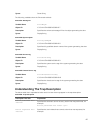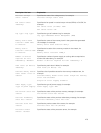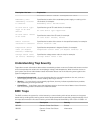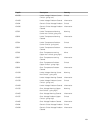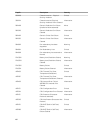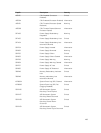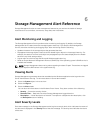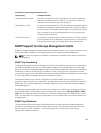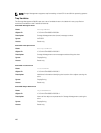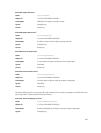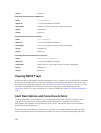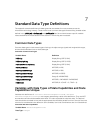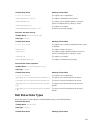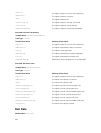
Table 1862. Storage Management Alert Severity
Alert Severity Component Status
OK/Normal/Informational No action is required. The alert is provided for informational purposes
and does not indicate an error condition. For example, the alert may
indicate the normal start or stop of an operation.
Warning/Non-critical A component requires attention. This alert indicates a potential problem,
but does not necessarily mean that the system has currently lost data or
is nonfunctional. For example, a Warning/Non-critical alert may indicate
that a component (such as a temperature probe in an enclosure) has
crossed a warning threshold.
Critical/Failure/Error A component has either failed or failure is imminent. This alert indicates
a serious problem such as data loss or a loss of function. For example, a
Critical/Failure/Error alert may indicate that an array disk has failed.
SNMP Support for Storage Management Alerts
By default, Storage Management installs SNMP trap forwarding support. For this support to function, you
should have SNMP installed on the managed system prior to installing Storage Management.
NOTE: For more information on installation requirements and SNMP, see the Server Administrator
documentation.
SNMP Trap Forwarding
The Storage Management alerts are displayed in the Server Administrator alert log and are forwarded to
the Windows application alert log. If you have SNMP installed on the managed system (and the SNMP
service is running), the Storage Management alerts in the Windows application alert log are forwarded as
SNMP traps. In order for these traps to be viewable, however, a target system or application must be
configured to receive these traps. SNMP traps that are generated by Storage Management can be viewed
in any standard SNMP-compatible enterprise management console.
The Windows SNMP service must be configured to forward the SNMP traps to the target system or
application. When forwarding to an application, the application should also be configured to receive the
SNMP traps. The IT Assistant application is already configured to receive the SNMP traps generated by
Storage Management.
See Windows operating system documentation for information on configuring the operating system to
forward SNMP traps. This information may be located under such topics as Setting up SNMP or SNMP
traps . When configuring SNMP for Windows, be sure that the SNMP traps are forwarded to the correct
server. For information on configuring an application to receive SNMP traps, see the documentation for
that application.
SNMP Trap Definitions
The Storage Management information base (MIB) defines the SNMP traps that Storage Management
generates. These traps correspond to the alerts documented in the Alert Descriptions and Corrective
Actions section. The MIB is located in ..\sm\mibs\dcstorag.mib, a subdirectory of the Storage
Management installation directory.
485



